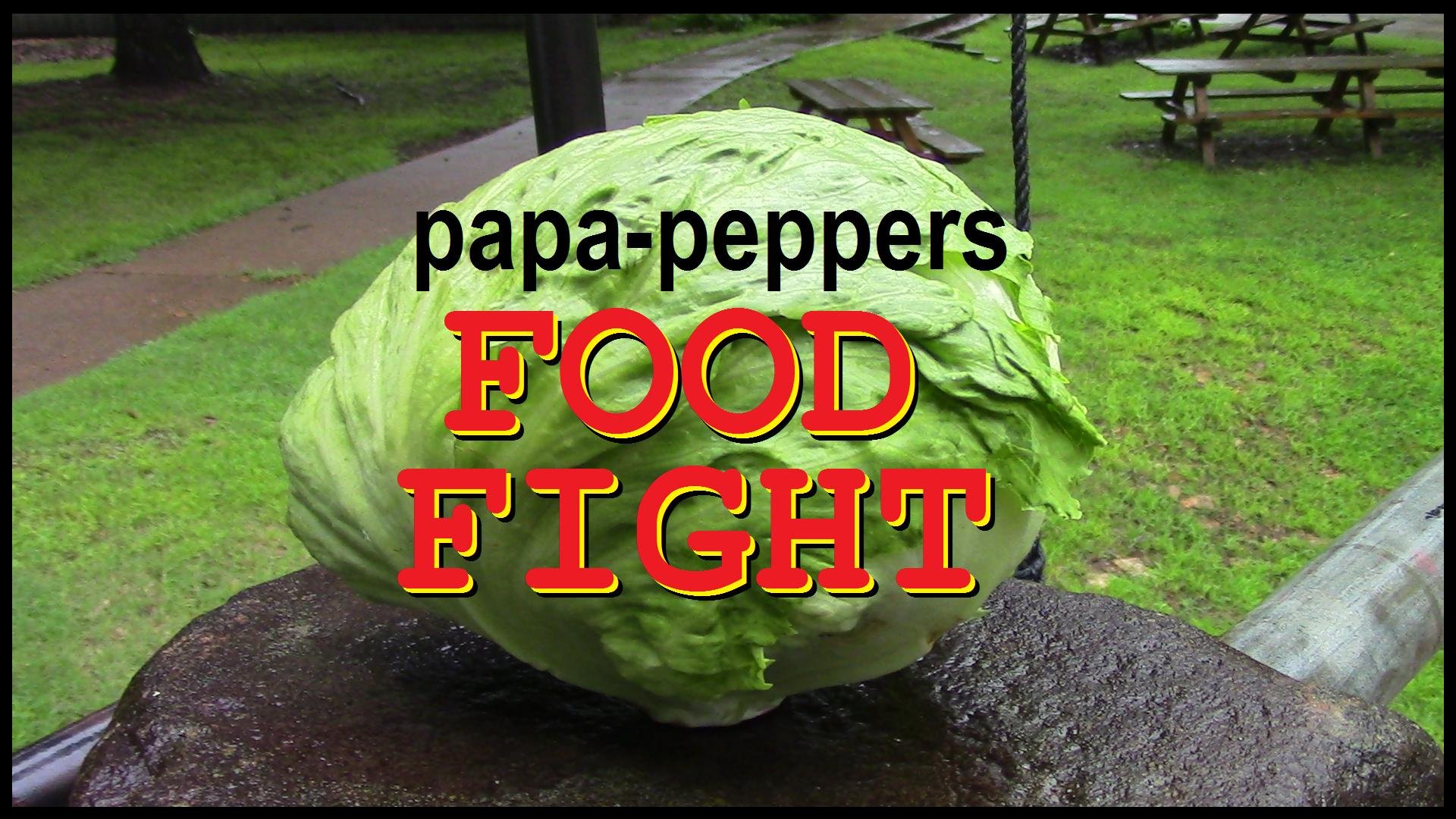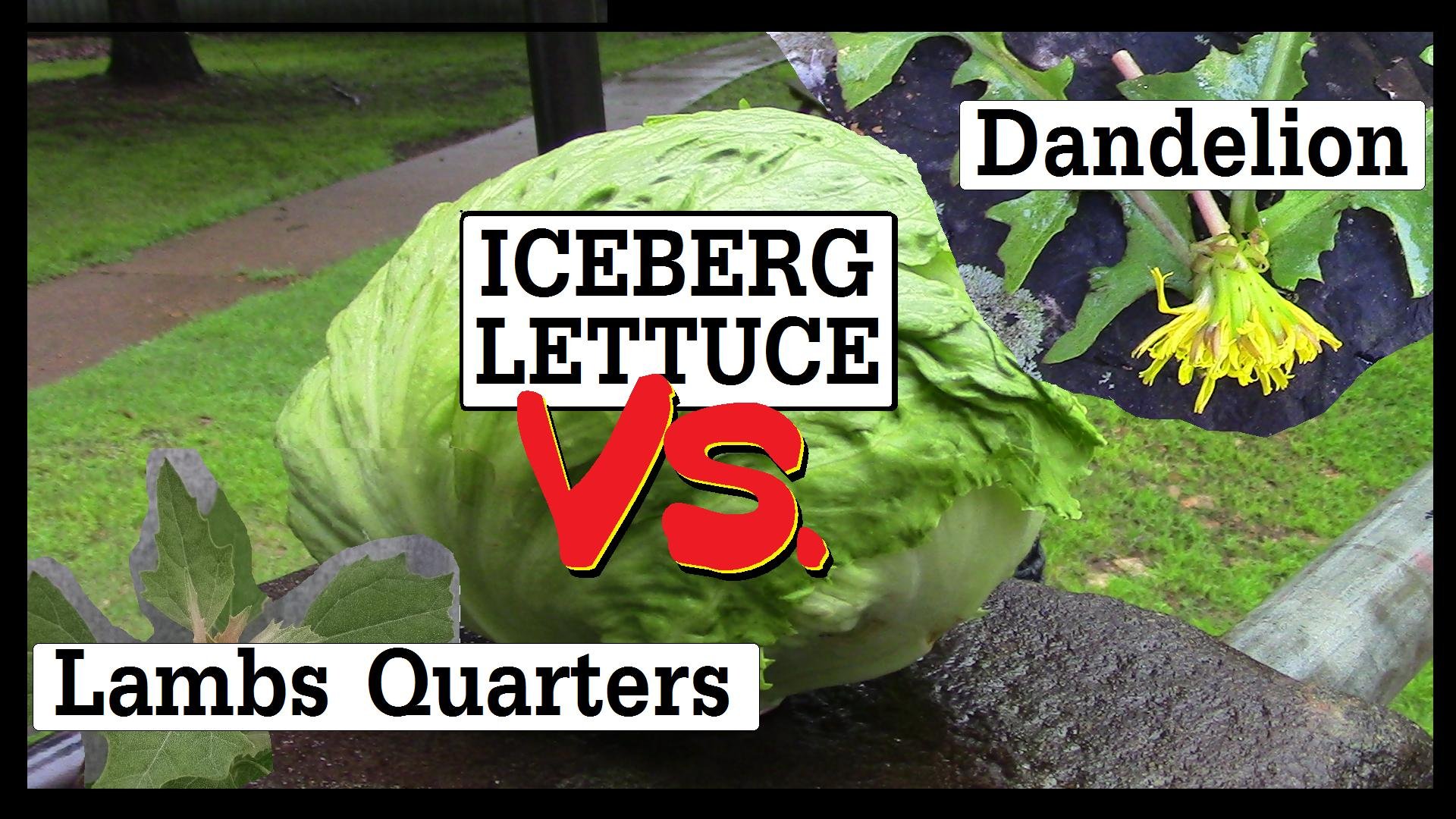
May the best food win!
I figured since I've been foraging and gardening so much, I'd compare the nutritional value of various common foods from the grocery store and market with those that you can find growing naturally in many areas. Basically, I was wondering if it's really worth my time and effort to buy certain foods from the store when there are many options right out in the fields and woods all around me.

CONTESTANT #1 - ICEBERG LETTUCE
The challengers?
Let's compare. First of all, even at only a $1 or $2 per head, Iceberg Lettuce is already behind, because the competitors are both free. Putting that aside, what's the nutritional value of the plants? Let's start out with our contestant, Iceberg Lettuce.
ICEBERG LETTUCE
A single 1 cup serving of Iceberg Lettuce would contain the following:
GREAT SOURCE OF
- Vitamin K - almost 25% DV
DECENT SOURCE OF
(5% - 9% DV)
- Vitamin A
- Folate
CONTAINS SOME OF THE FOLLOWING
(All less than 5%)
- Vitamin B6
- Vitamin C
- Vitamin E
- Thiamin
- Ribiflavin
- Iron
- Calcium
- Manganese
- Copper
- Potassium
- Zinc
- Phosphorus
- Magnesium
CHALLENGER #1 - DANDELION
A single 1 cup serving of Dandelion would contain the following:
INCREDIBLE SOURCE OF
- Vitamin K - over 500% DV
- Vitamin A - over 100% DV
GREAT SOURCE OF
- Vitamin C - over 30% DV
- Calcium - 10% DV
DESCENT SOURCE OF
(5%-9% DV)
- Vitamin
- Thiamin
- Vitamin B6
- Riboflavin
- Magnesium
- Manganese
- Potassium
- Copper
- Iron
CONTAINS SOME OF THE FOLLOWING
(All less than 5%)
- Niacin
- Folate
- Phosphorus
- Zinc
- Sodium
CHALLENGER #2 - LAMBS QUARTERS
A single 1 cup serving of Lambs Quarters would contain the following:
INCREDIBLE SOURCE OF
- Vitamin K - over 1100% DV
- Vitamin A - almost 300% DV
- Vitamin C - over 100% DV
GREAT SOURCE OF
- Manganese - almost 50% DV
- Calcium - almost 50% DV
- Riboflavin - over 25% DV
- Sodium - almost 25 % DV
- Copper - almost 20% DV
- Vitamin B6 - over 15% DV
- Potasium - 15% DV
- Thiamin - over 10% DV
- Magnesium - 10% DV
DECENT SOURCE OF
(5%-9% DV)
- Niacin
- Folate
- Phosphorus
- Iron
CONTAINS SOME OF THE FOLLOWING
(All less than 5%)
- Selenium
- Zinc
DETERMINING THE WINNER
I'll use a simple point system for determining the winner, based on the categories used above.
For each "CONTAINS SOME OF THE FOLLOWING" nutrient listed, 1 point will be awarded.
For each "DECENT SOURCE OF" nutrient listed, 2 points will be awarded.
For each "GREAT SOURCE OF" nutrient listed, 3 points will be awarded.
For each "INCREDIBLE SOURCE OF" nutrient listed, 4 points will be awarded.
For example, for Folate, Iceberg Lettuce earned 2 points while each of the challengers only earned 1 point each.
THE TOTALS
OUR CONTESTANT: ICEBERG LETTUCE - 20 points
1st CHALLENGER: DANDELION - 37 points
2nd CHALLENGER: LAMBS QUARTERS - 49 points
CONCLUSION AND PURPOSE OF THE FOOD FIGHT
This was just a simple demonstration of the benefit of adding some common wild plants to your diet. Not only can it be a fun activity to get outdoors in the sun and walk around a bit, it is both nutritionally and financially beneficial. Though Iceberg Lettuce may be a much more common food source these days, that alone certainly does not mean that it is a better or more nutritious food source.
As always, be careful and cautious when eating any wild edible, and you may want to seek out a local expert in the matter or consult your physician first. Additionally, know the source of your wild foods. Many of these are considered to be useless weeds to many, so always avoid any that may have been sprayed with chemicals such as pesticides.

